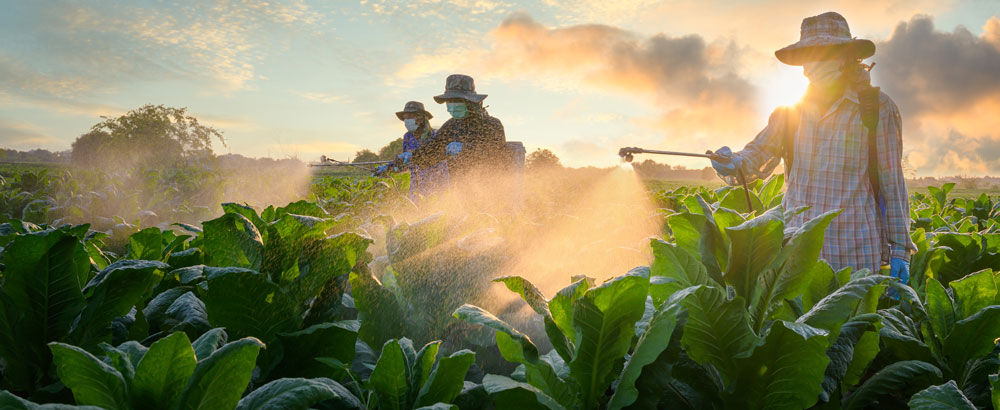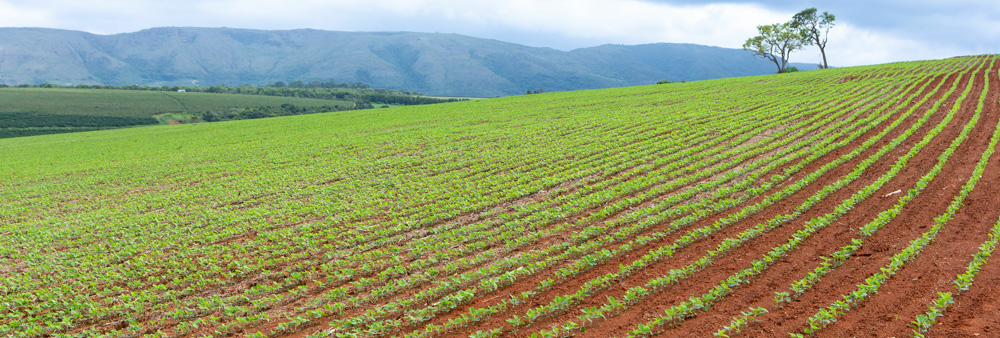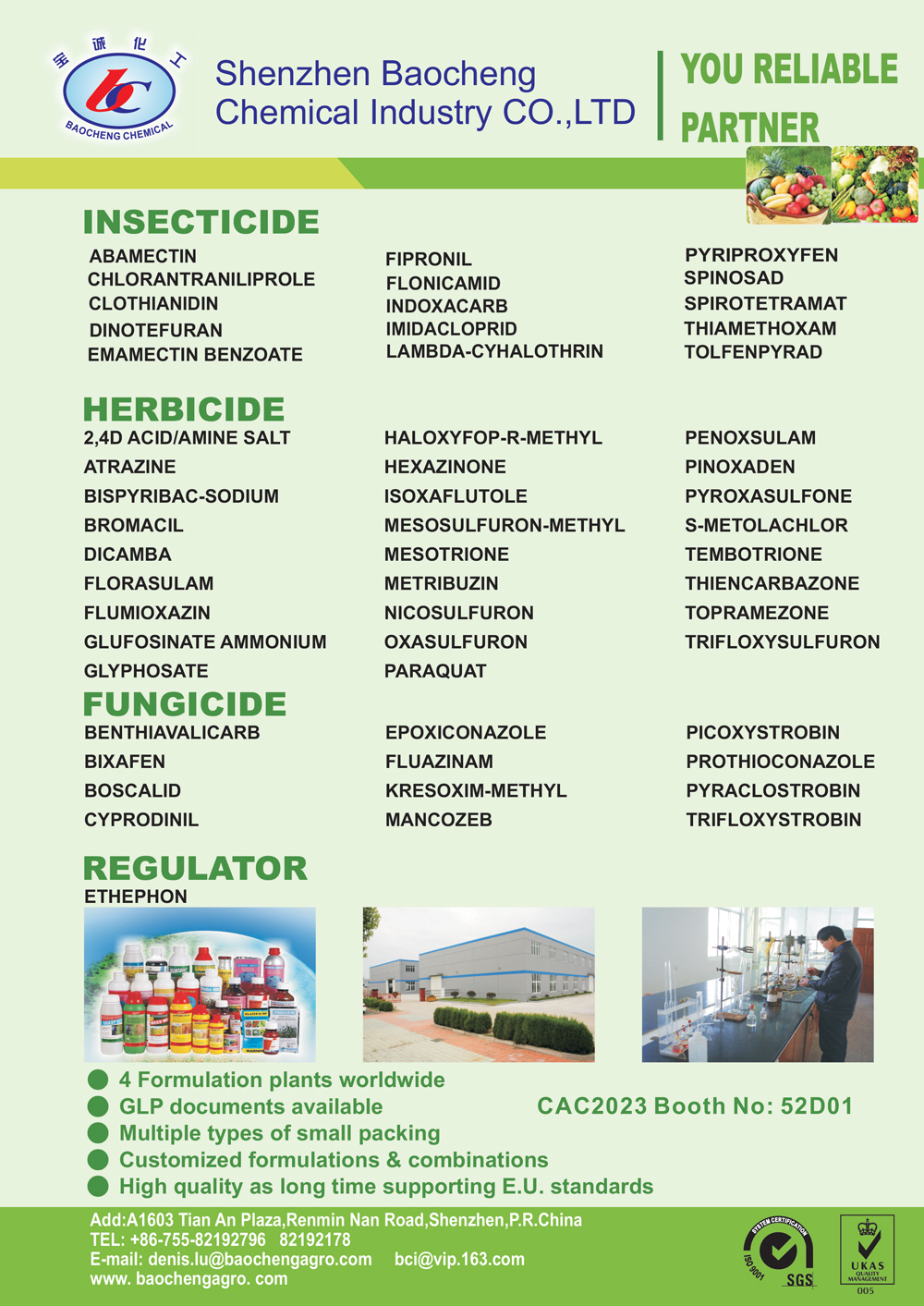Regulations Across the Globe
Updates for Asia, Africa, Europe, Latin America, and United States
Scroll Down to Read
Regional regulations are bringing about more bans, revisions for biologicals, and a call for unifying the regulations process. Find out what these five different regions are phasing out and in for synthetic and biological crop protection.
ASIA

Trends in banning some highly hazardous pesticides (HHPs) in Asia and increasing use of biological products in the Asian market.
By Dr. Piyatida (Tung) Pukclai

Regional Business Development & Regulatory Policy Advisor (Asia-Pacific)
knoell group
As part of its ongoing effort to improve food safety, China is reportedly ready to phase out more pesticides. As of the end of March 2022, China has banned and restricted almost 50 pesticides. Sale and use of phorate, isofenphos-methyl, methetamphos, and isocarbophos will be banned from 1 September 2024. India proposed a ban on the import, manufacture, sale, transport, distribution, and use of three out of the 27 pesticides in its draft notification. The banned pesticides are dicofol, dinocap, and methomyl. In addition to the three products banned, the central government, on the recommendation of the expert committee, decided to remove selected crops from the label claim for which the bio-efficacy and residue data was not available. The eight pesticides for which there is a change in label claim are carbofuran, malathion, monocrotophos, quinalphos, mancozeb, oxyfluorfen, dimethoate, and chlorpyriphos.
Among Southeast Asia, so far Thailand prohibits the use of 111 pesticides, Vietnam banned carbosulfan and benfuracarb in the second quarter of 2022. Mancozeb, zineb, maneb, and ziram were banned in the first quarter of 2023, atrazine and acetochlor are banned in the second quarter of 2023 while the following pesticides will be banned in the fourth quarter of 2023: chlorothalonil, carbaryl, propineb, thiodicarb, and antibiotics (erythromycin, gentamicin sulfate, kanamycin sulfate, oxytetracycline, streptomycin, and tetramycin).
While we see trends in phasing out of highly hazardous pesticides in Asia, biologicals came to the attention of authorities and producers. More specific regulations for biologicals are implemented or at least specific data requirements are being set in several Southeast Asia countries. There are several regulatory changes such as exemption of some toxicity data for specific biopesticides, less technical paperwork, and reduced process on the registration approval. In April 2023, Asian biopesticide and pesticide regulation officers met in Thailand to strengthen their capacity in streamlining regulatory processes in their countries. The meeting addressed the issues related to the limited harmonization of requirements for the registration of biologicals in Asia. Developing harmonized regulatory standards between Southeast Asia countries will enable them to benefit from the acceptance of generated registration data, or registrations concluded elsewhere. Furthermore, this would enhance biopesticide product registration and use, mitigate chemical pesticide residues, and promote trade. As a way forward, the regulatory experts urged the regulation officers to follow the common regional regulatory standards that can increase the approval rate of biologicals, support farmers, and enhance trade.
China published the guidelines on environmental risk assessment for microbial pesticides. At present, protection targets considered in environmental risk assessment in China include aquatic ecosystem (daphnia, fish), birds, honeybees, and silkworm. Groundwater, non-target arthropods, soil organisms are not considered in comparison with chemical pesticides. The guidelines were officially implemented on March 1, 2023.
AFRICA

Civil organizations urge regulatory bodies to update the pesticide regulatory framework.
By Dr. Piyatida (Tung) Pukclai
Each African country has its own pesticide registration policies. In each of the country’s policies, it is stated that no pesticide shall be registered unless the efficacy, safety, and quality are tested under field or laboratory conditions and approved by the regulatory bodies. They also state that registration applicants cannot manufacture, import, or sell pesticides that are banned or restricted by international conventions in which countries are a party. However, most African regulatory authorities do not have adequate resources to monitor the impacts of pesticides or the capacity to prevent negative human health and environmental consequences. They have limited capacities for studies on toxicity and risk assessment as they are very costly. The toxicity data used to register pesticides in Africa are often sourced from northern hemisphere countries. Risk assessment requires toxicity assessment, environmental fate data, and the use of models for occupational, dietary, residential, and environmental exposure assessments. Using exposure modelling results from the northern hemisphere is not an ideal approach.
Despite these systems for pesticide regulation, pesticides with severe environmental and human health hazards are still widely used in Africa. Many of the active ingredients in pesticides have already been banned in the European Union (EU) and are still being formulated and/or imported and used in Africa. Not a single country has a separate or special registration system for highly hazardous pesticides (HHPs). Considering HHPs, Botswana, Cameroon, Equatorial Guinea, Gabon, Malawi, Mozambique, Rwanda, Tanzania, Zambia, and Zimbabwe are following the process of identification, risk assessment, and risk mitigation of HHPs. In East and Southern Africa, regional strategies for addressing HHPs are under development. While West and Central Africa work is ongoing to identify and phase out HHPs in some countries. Among these countries, South Africa will begin phasing out certain pesticides and completely ban them by 1 June 2024. These include chemicals with active ingredients that cause cancer, affect reproductive health, and cause genetic mutations.
Presently, industry and civil organizations are demanding stricter rules for pesticide registration approval and authorization informed by local data. They want governments to explore options to make regulatory risk data more transparent and accessible. Civil organizations have made various submissions to the government to update the regulatory framework. However, regulatory authorities are slow in responding.
EUROPE

European fertilizing products regulation and the concerns today.
By Roland de Bruijne
Global Regulatory Affairs Manager-Crop Protection and Nutrition, knoell NL BV
Jayne Harris
Global Regulatory Affairs Group Leader-Crop Protection and Nutrition, knoell Consult Ltd.
Ana Bejarano Ramos,
Global Regulatory Affairs Manager-Crop Protection and Nutrition, knoell Iberia SL
The Fertilizing Products Regulation (European Union) 2019/1009 (FPR) came into force on 16 July 2022 repealing the old Regulation (EC) 2003/2003, which essentially covered mineral fertilizers but still allows national legislation to run in parallel. The FPR introduces significant changes and a much broader scope of defined fertilizers, which now includes organic, inorganic, and organomineral fertilizers, soil improvers, growing media, plant biostimulants, composts, digestates, and inhibitors.
The FPR recognizes the importance of innovation. It introduced a category for plant biostimulants and recently established a new raw material category for recovered high purity materials. Moreover, legislation is in preparation to approve some animal by-products as component raw materials. From 2022, a survey is permanently open to notify the European Union (EU) Commission on potential new raw materials.
The implementation of the regulation has not been without issue. Even following a decade of dialogue between officials and stakeholders. Some Member States have faced challenges in adapting their national legislation and aligning with the new requirements, while others have not yet started. Thus, leading to delays in fully implementing the regulation and achieving its goals.
Concerns about the lack of clarity and detailed guidance on specific aspects of the regulation has created ambiguity and uncertainty in the industry. Comprehensive guidance and standards are necessary to ensure consistent interpretation and application of the regulation. As an example, non-nutrient polymers are subject to biodegradability criteria, but the testing standards are still under development.
Micro-organisms are an area of increasing interest, but the list of approved micro-organisms is limited, and it may take another two to four years to get additional micro-organisms added to this list.
For plant biostimulants, unlike any other fertilizer category, there is a requirement for efficacy data to support label claims such as nutrient use efficiency. Extensive agronomic trials must be performed using agreed standards, which are not yet harmonized, despite being published. We are seeing that some companies are trying to take advantage of national requirements where they exist to gain market access in specific countries.
In addition, two ways of labelling might be allowed in the future: Digital labelling as well as physical labelling on the packaging or accompanying document for bulk fertilizers. What information could leave the physical label and be presented digitally, is still under discussion.
The FPR imposes new administrative burdens on manufacturers and importers. The requirements for product conformity assessments, labelling, and compliance with safety standards can be resource-intensive and financially challenging for some businesses like small and medium-sized enterprises (SMEs).
The regulation’s emphasis on organic and recycled materials in fertilizing products has raised concerns about limited access to suitable raw materials. Strict requirements on nutrient content, impurities, and composition can restrict the availability of certain materials, leading to potential supply shortages and increased costs for manufacturers. The need to comply with the specific EU standards and rigorous authorization processes can be challenging for non-EU manufacturers, potentially limiting market access and competition.
Overall, the European Commission and relevant authorities continue to review and address these concerns to ensure the regulation achieves its intended goals while minimizing potential drawbacks.
LATIN AMERICA

A growing market for conventionals and biopesticides.
By Sarah-Madeleine Hönig

Team Manager Biocontrol—Emerging Products and Markets Crop Protection
knoell group
In general, the crop protection market for conventional pesticides as well as for biocontrol products continues to grow in the LatAm region. Data requirements and evaluation schemes vary between countries and a harmonized approach for the LatAm region is not available. However, many countries are currently working on modernizing their regulations, also tailoring them more to the needs of biocontrol products. With the revision of regulations, a faster and easier market access in LatAm countries may become possible within the next few years, increasing its markets’ value even further.
The biggest and fastest growing market remains in Brazil. With a record number of approvals in the last seven years, the Brazilian crop protection product market is the most important in South America. Pesticide Bill No. 1459/22, which will introduce more flexibility in registration, was forwarded to the Senate Environment Committee and its text will be reviewed during the coming weeks. While criticized internationally and amended since its introduction, the need to approve the Pesticide Bill is agreed by Brazilian ministers for agriculture and agrarian development. The Brazilian biopesticide market has increased by approximately 70% in the last year, due to a large-scale adoption of bio-inputs by soybean, corn, sugarcane, and cotton farmers. In addition, a new legislation for microorganisms is expected to be introduced soon. It will expand the definition to inactivated microorganisms, genetically modified organisms (GMOs), and biostimulants. For plant extracts, a specific legislation is under discussion, but currently they must be registered as a conventional formulation.
As an example for actively reshaping the regulatory requirements for biocontrol products, Chile is continuing to introduce regulations especially designed for biopesticides to offer clear guidance and thus encouraging registration of chemical alternatives. While the first regulation introduced in 2018 dealt solely with microorganism and their metabolites, a regulation for semiochemical is in place since December 2022 and will likely be followed this year by a regulation for natural substances. Even though the suitability of the regulations for a smoother and faster registration of biocontrol products remains to be seen, it underlines Chile’s efforts on providing alternatives to conventional products.
UNITED STATES

The most important pesticide regulation update in the U.S. in 2023, is the implementation of the renewal of PRIA 5 starting 27 February 2023.
By Driss Benmhend
 US Regulatory Affairs Group Leader — Crop Protection and Nutrition
US Regulatory Affairs Group Leader — Crop Protection and Nutrition
knoell USA
The new pesticide registration service fees and decision timeframes specified in the Pesticide Registration Improvement Act of 2022 (PRIA 5) went into effect on 27 February 2023. Pesticide registration service fee tables in FIFRA section 33(b)(3)(B) are updated by PRIA 5, which also specifies that the fee tables will become effective 60 days after date of enactment.
Pesticide applications received by Environmental Protection Agency (EPA) on or after 27 February 2023, will be subject to PRIA 5 fees and timeframes. Applications received by EPA prior to 27 February 2023, will be subject to PRIA category fees and timeframes specified under the Pesticide Registration Improvement Extension Act of 2018 (PRIA 4). PRIA 5 updates added new categories, timelines, and fee to PRIA 4.
EPA continues to update additional PRIA-related webpages to include category interpretations and the PRIA 5 fee determination decision tree tool. The agency will issue another announcement when all updates have been completed. •
Photos: from top
africa-studio.com– stock.adobe.com
เลิศลักษณ์ ทิพชัย – stock.adobe.com
Nieuwenkampr – stock.adobe.com
rsooll – stock.adobe.com
Imago/Wirestock Creators – stock.adobe.com
Daniel Thornberg – stock.adobe.com
Photo of Driss Benmhend courtesy of knoell USA, LLC
Photo of Piyatida (Tung) Pukclai courtesy of knoell
Photo of Sarah Honig courtesy of knoell Germany GmbH
